„Mein Wald wächst auch ohne Autos“
Ich finde es wesentlich befriedigender Naturschutz zu machen, als Naturschutz zu fordern. Aber beides ist wichtig. Zum Glück gibt es viel Gelegenheit zum aktiven Naturschutz. Meist wird man dreckig dabei, manchmal kann man Geld verdienen damit.
- 1 Post
- 5 Comments
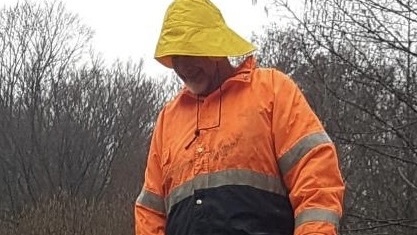
 5·5 months ago
5·5 months agoSome more screenshots:
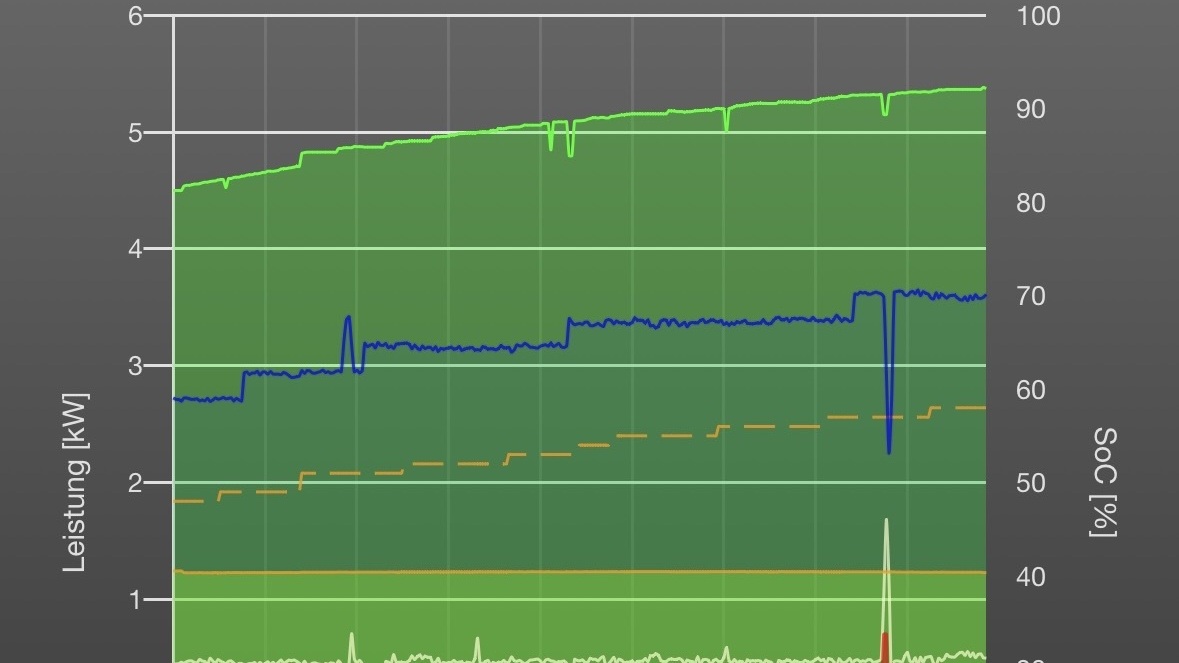
Green is solar production steadily increasing during the morning.
Orange is the constant charging of the house Battery. We have a 10 kWh Battery but carge only op to 70% to incerase it’s lifetime.
Yellow is the house consumption. No idea what the spike at 8:45 is.
Blue is te EV charging power constantly increasing as the PV power goes up.
Compare this to the the more turbulent situation at 9:00h:
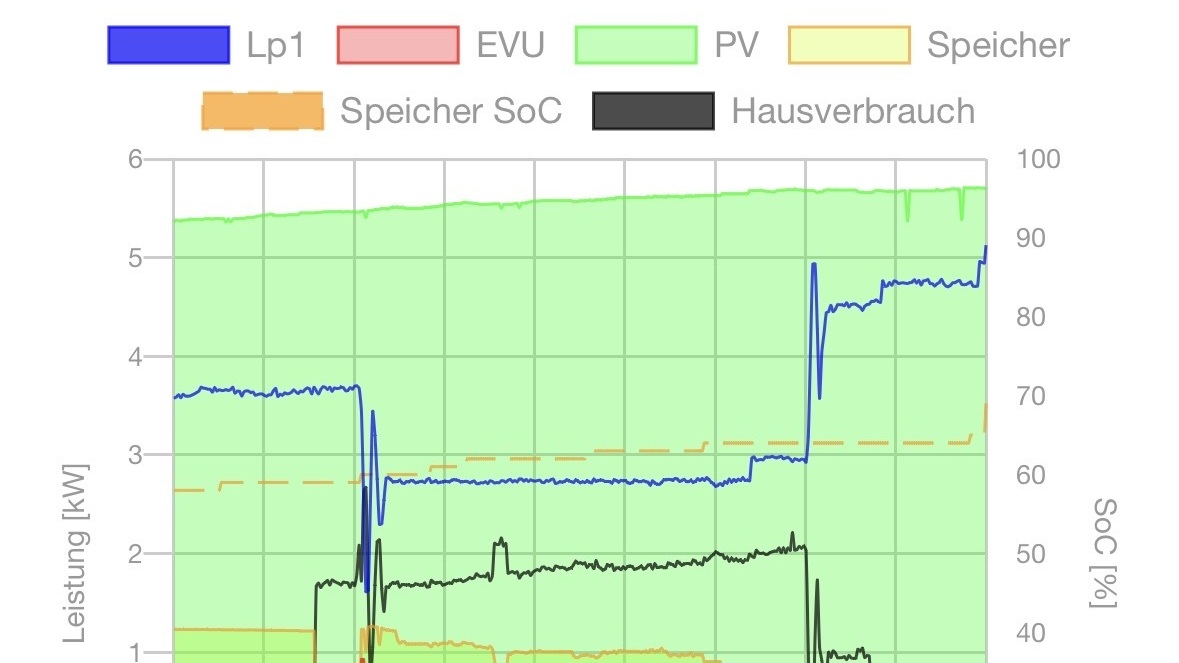
I take a shower and the hearpump kicks in to replace warm water in the storage tank thus the house consumption (here black not yellow) inceraseses.
At first this means charging of the house battery (orange) drops to nearly zero.
At 9:05 reduction of EV charging kicks in to give the house battery priority.
At 9:30 you se hoys battery charging go sliwer because we nearly reached it’s maximum charge.
At 9:40 heat pump is done but I make a coffee. Then at 9:40 nearly all power is used for EV charging.
all this works completely automated intense of. These are commercially available easy products. Only the nerds look inside what’s actually happening.
This example is driven by my own PV, but it is trivial to drive it by power prices or country wide power production.

 8·5 months ago
8·5 months agoThis is very possible and practical, in fact I have been doing it for a few years with OpenWB and my own 10.5 kWp PV generator.
This is based on a current sensor where the mains enter my house. OpenWB tries to increase or decrease the EV charging current so no current is coming into the house or going out of the house. So when I switch on the coffee machine, within a second or so OpenWB will decease the current to the car so I don’t have to buy energy.
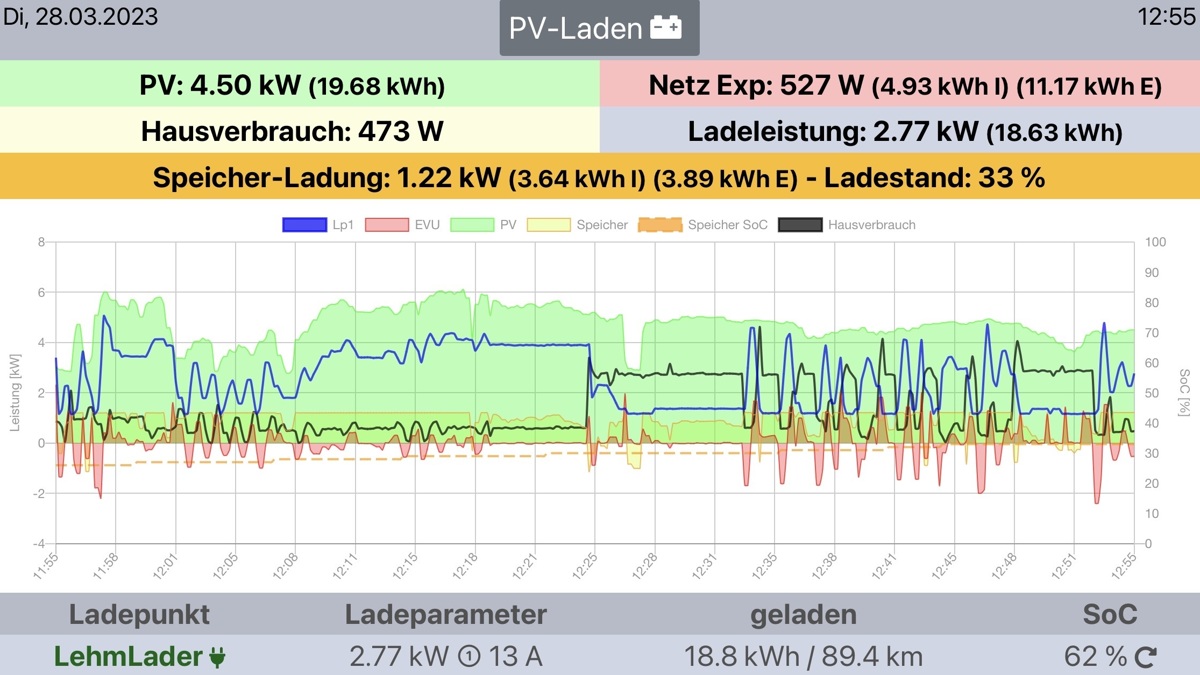
In that image you can see that until 12:08 we have intermittent sun / pv production (green line) and most of the time very erratic power usage in the house (black line). The system is wildly adjusting the car charging speed (blue line) to keep me from buying or selling electrical power (red line).
Once set up this works really well and I rarely use non-PV power to charge my car - even in deepest winter I guess 50 % of car charging is done by solar.
Here in Germany people now start getting dynamic pricing where the cost of electricity changes every 15 minutes - mostly it’s cheap when the wind blows and the sun shines. Wallboxes like OpenWB can use that pricing to decide when to charge your car. Others use just Solar radiation to automatically decide when to charge. This is all technology available out of the box right now.
Unless the thing is seriously broken 1500€ sounds cheap. Most twizys have rented batteries - Renault rents you the battery for 50€/month.

- Renault EV hacked with OVMS and mostly running on locally produced electricity. Runs 80 km/h, seats two and always finds a parking spot.
- Kon-Tiki Oven to produce bio charcoal which we use a lot to make our soil somewhat less compact.
- Small Solar Power Roofs to keep the rain or the sun away when sitting on the bench (one can be seen behind the car).
- Total of about 50 kWp Solar, which we enjoy a lot - produces reasonable energy even during the Winter. Unfortunately, when the grid goes down, our own solar will go down also. People often underestimate the effort and investment needed to make a large solar system workable off-grid.
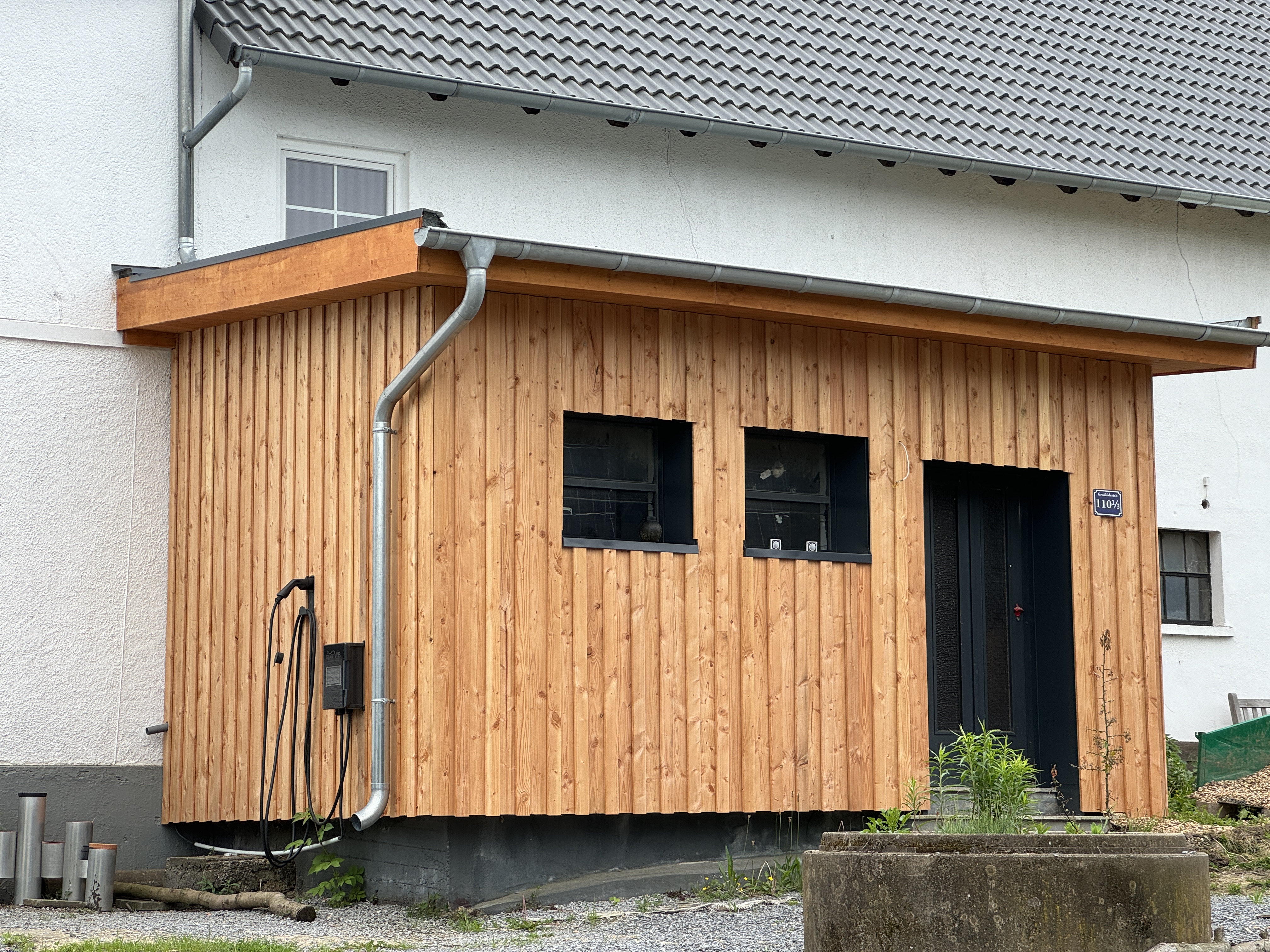
- New facade with about 25 cm of insulation made from wood fibre. All materials locally sourced, mostly from our own grounds. Keeps the building cool in summer and warm in winter.
- OpenWB EV charging of EV only when we have excess solar production.
- Rain water is not sent into the city collection system but kept on the grounds and further down is collected in a little lake.
- Cheap Solar Lights with motion detectors. Help a lot to not tip over during the night - even works reasonable during winter when the days are very short.
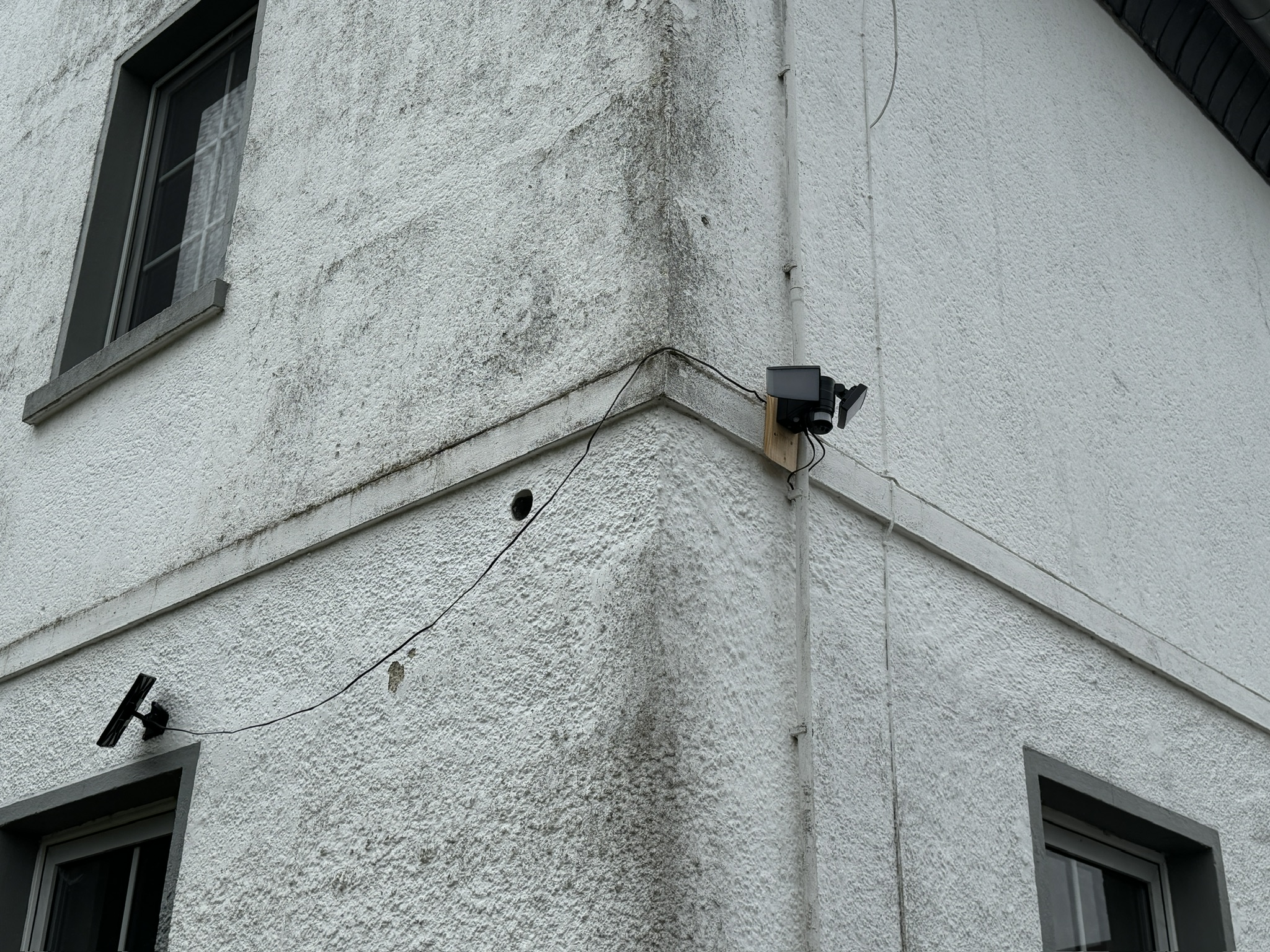
- Home-grown power management system: In winter we use excess energy to heat up the workshop ensuring it does not freeze during the night (if that’s not enough, and it cools down below 1 C we automatically use grid power to keep it from freezing.
- The fridge for the drinks is only run on excess power.
- Well insulated workshop build beside the house, providing additional insulation to the living quarters.
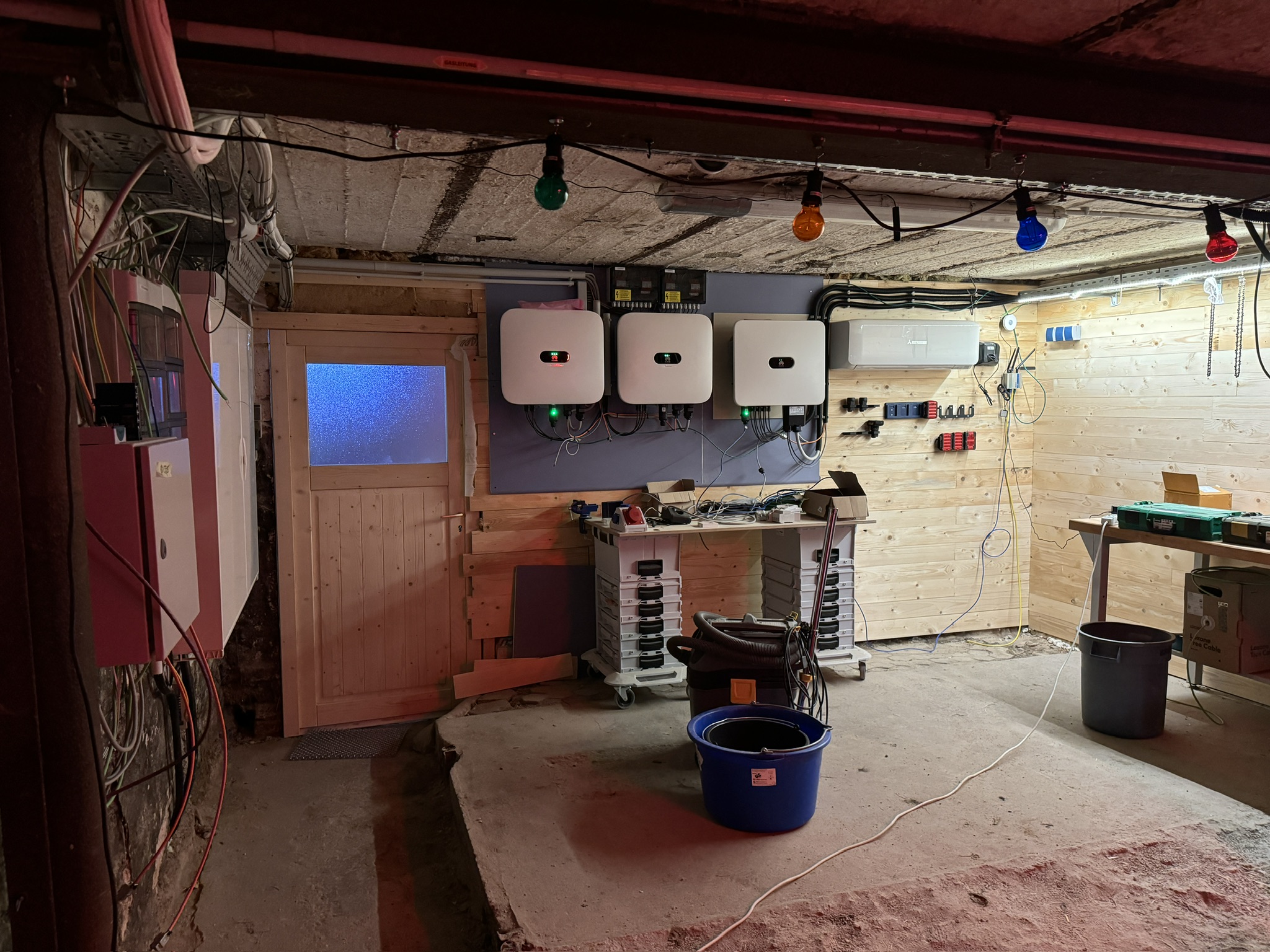
- Reactivated the old well, added a manual frost resistant water pump
- We are looking into using solar power to fill the reservoir from the well on demand. But this will need some trench digging.
- AirPods Pro or any other good noise-cancelling equipment to avoid getting def and dumb by roaring farm machinery.
- We have a shepherd’s wagon without any electricity. Basic services like warmth, light, coffee and pizza can be provided by fossil means.
- We have something like a tiny house completely running on off-grid on solar: electric stove, baking oven, warm water, floor heating, etc. Works very well for 10 years now.
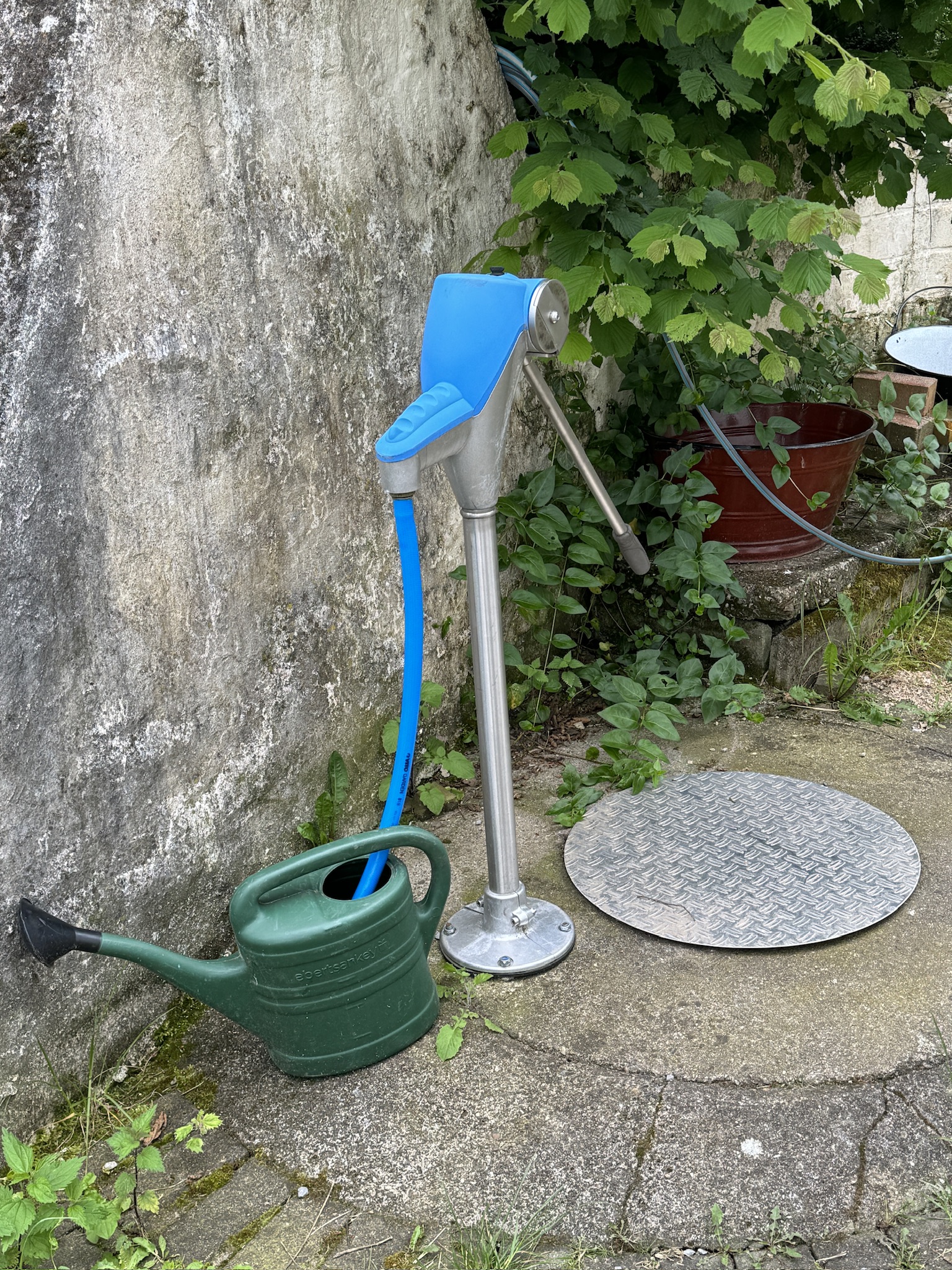
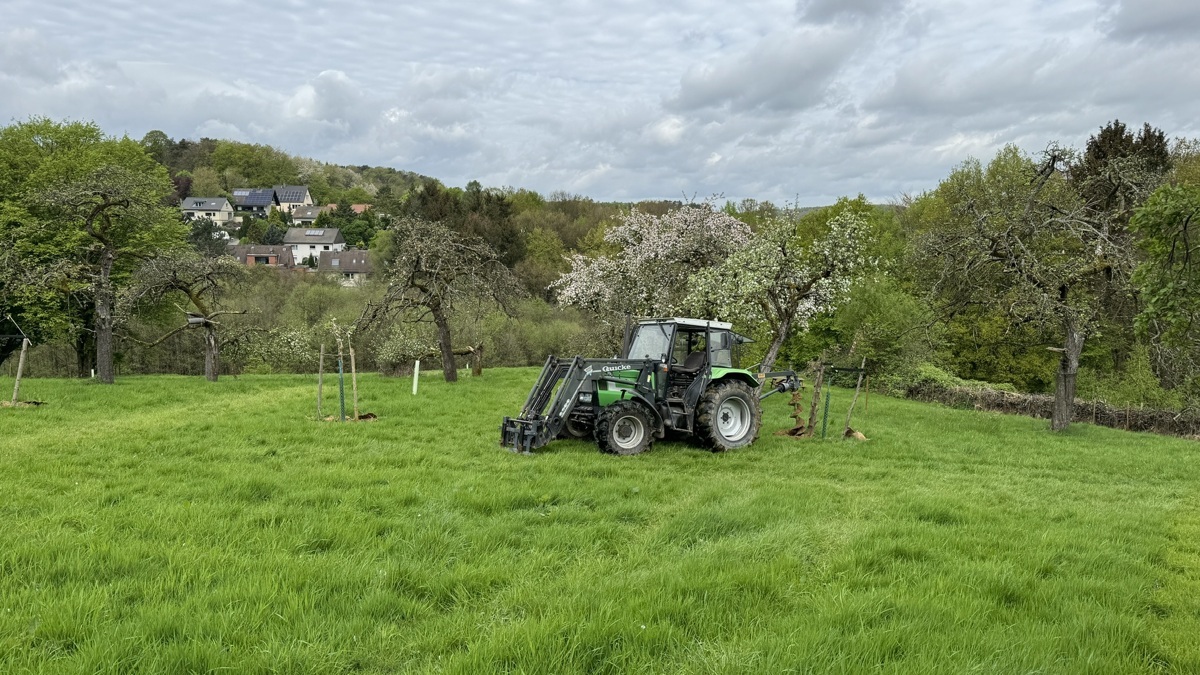
The 230 V power just is connected to the mains.
Up to 800 W rated inverter power you don’t need a permit under current german law.
If I do not use the power in my house it will just flow back into the electrical grid.
For EV charging this shed produces not enough power. Charging the Twizy would need 3 days with optimal sun. Charging the Tesla about four weeks.
But there is a separate 10500 Wp solar array on the house and an energy management system which controls everything charging. See OpenWB on how this can be done.